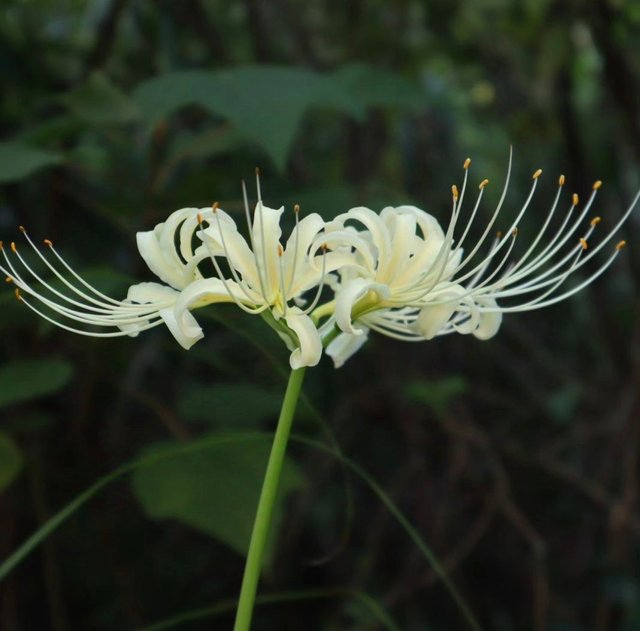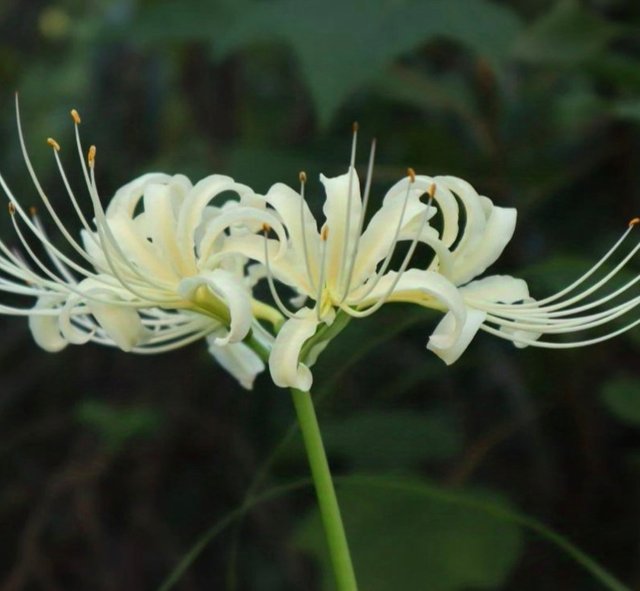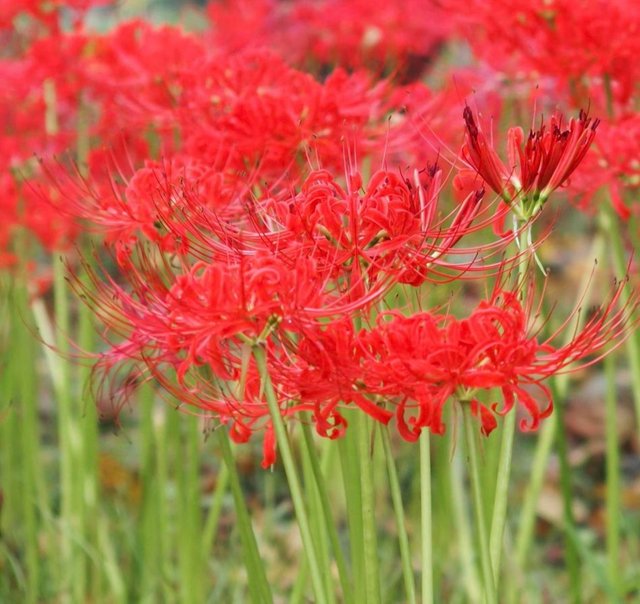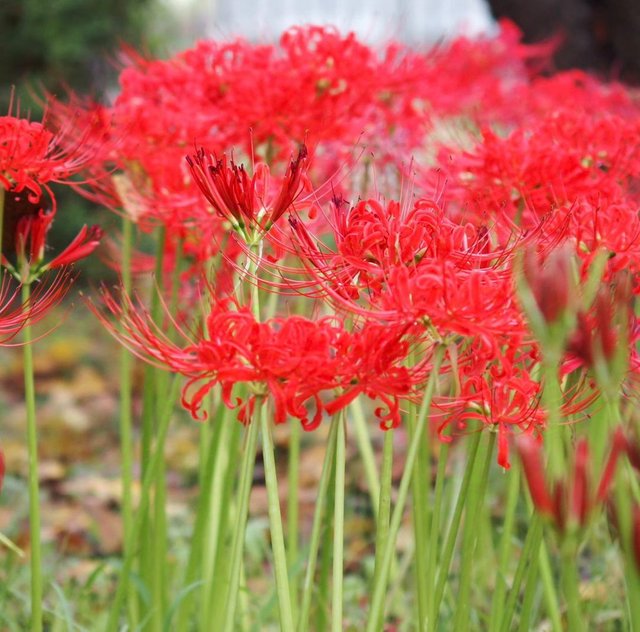Red Spider Lily




The Red Spider Lily often referred to as the "corpse flower" in Japan due to its association with death and funerals, is a plant steeped in myth, symbolism, and beauty. With its striking crimson petals and unique spider-like appearance, this flower captivates with both its aesthetics and its mysterious cultural significance.The plant thrives in moist, well-drained soil, preferring partial shade to full sun. Growing from a bulb, the Red Spider Lily typically blooms in late summer or early autumn, depending on the climate.
What makes this flower distinct is its striking form: the blossoms rise on a tall, leafless stalk that can grow up to 60 centimeters (about 2 feet) high. The flowers themselves have long, thin, curling stamens that extend outward, giving the bloom its "spider-like" appearance. The bright red petals, sometimes with a hint of orange, are arranged in a whorl, contributing to the overall dramatic look of the flower.After the flowers die off, the plant produces strap-like green leaves, which remain through the winter, helping the bulb store energy for the next blooming cycle. Curiously, the leaves and flowers never appear at the same time—one of the many unusual features of this enigmatic plant.
The Red Spider Lily holds deep meaning in various cultures, especially in Japan, China, and Korea. In these regions, it is often associated with the afterlife, separation, and rebirth.In Japan, the Red Spider Lily is known as Higanbana meaning "flower of the afterlife." It is commonly planted around graveyards and temples, symbolizing death, final goodbyes, and the journey to the next life. The name Higan refers to the Buddhist holiday celebrated in autumn, during which people visit their ancestors' graves to pay respects. The flowers bloom around this time, reinforcing their association with the cycle of life and death.